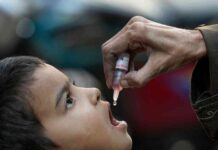A tragic incident has struck the state of New Hampshire, as health officials have confirmed the first fatal case of eastern equine encephalitis (EEE) in the United States this year. The individual succumbed to severe central nervous system disease caused by the rare but deadly virus spread by mosquitoes. The news serves as a stark reminder of the dangers posed by mosquito-borne illnesses, particularly during peak mosquito season in August and September.
The Fatal Case of EEE in New Hampshire
The New Hampshire Health Department announced the heartbreaking news of the EEE fatality on Tuesday. This marks the fifth reported case of EEE in the country this year, with other cases reported in Massachusetts, New Jersey, Vermont, and Wisconsin. The victim’s hospitalization due to severe central nervous system disease underscores the severity of EEE and its potential to cause devastating outcomes.
Dr. Benjamin Chan, New Hampshire’s state epidemiologist, emphasized the ongoing risk posed by EEE until a hard frost eliminates mosquitoes. With the nation currently in the midst of peak mosquito season, the threat of mosquito-borne illnesses remains high. The recent EEE-related death serves as a somber reminder of the importance of taking preventive measures to reduce the risk of contracting such diseases.
Preventive Measures and Public Health Responses
In response to the EEE cases, public health authorities have taken proactive measures to mitigate the spread of the virus. The Massachusetts Public Health Department announced the commencement of insecticide sprays following a confirmed EEE case in an elderly man. Additionally, several towns in Massachusetts have opted to close public parks during dusk and dawn, times when mosquitoes are most active, to minimize the risk of exposure to the virus.
Individuals can also play a crucial role in protecting themselves from mosquito bites by following preventive guidelines recommended by health officials. These measures include using insect repellent containing DEET or picaridin, wearing loose-fitting clothing that covers the arms and legs, and eliminating standing water sources around homes to prevent mosquito breeding.
Impact and Concerns Surrounding EEE
Despite this year not being a record-breaking one in terms of EEE cases, health authorities remain vigilant due to the virus’s high mortality rate. Approximately one-third of EEE patients do not survive the infection, typically succumbing within 10 days of symptom onset. Those who recover may face long-term consequences such as intellectual disability, personality disorders, seizures, paralysis, and cranial nerve dysfunction.
The Centers for Disease Control and Prevention (CDC) emphasizes the importance of public awareness and preventive measures to reduce the risk of contracting EEE and other mosquito-borne illnesses. With the U.S. also experiencing a high number of West Nile virus cases, it is crucial for individuals to take precautions to avoid mosquito bites and protect themselves from these potentially life-threatening diseases.
As the nation grapples with the challenges posed by mosquito-borne illnesses, it is imperative for both public health authorities and individuals to work together to prevent the spread of EEE and other viruses transmitted by mosquitoes. By staying informed, taking preventive measures, and supporting community efforts to control mosquito populations, we can reduce the impact of these diseases on our communities and protect the health and well-being of our residents.

















